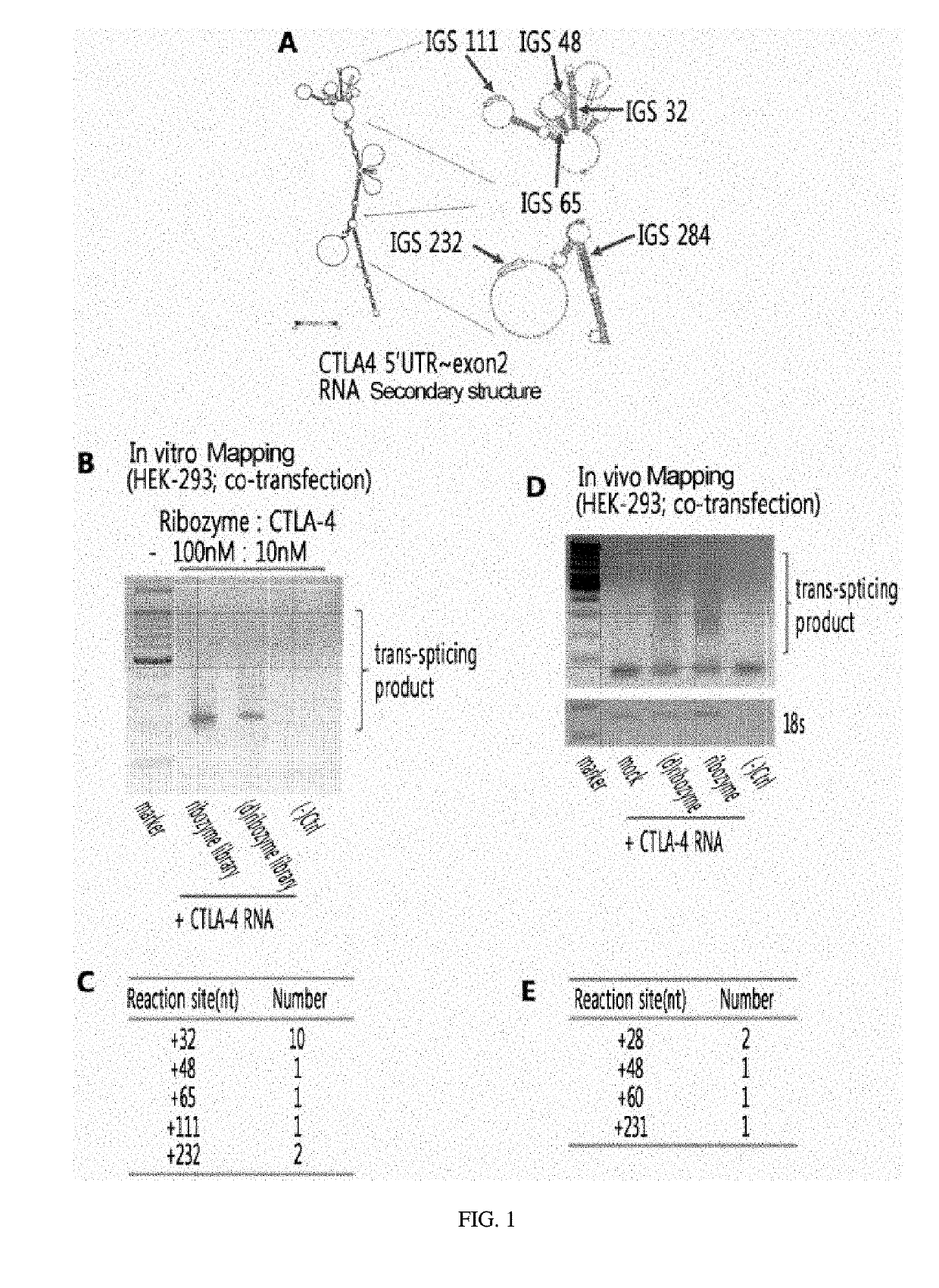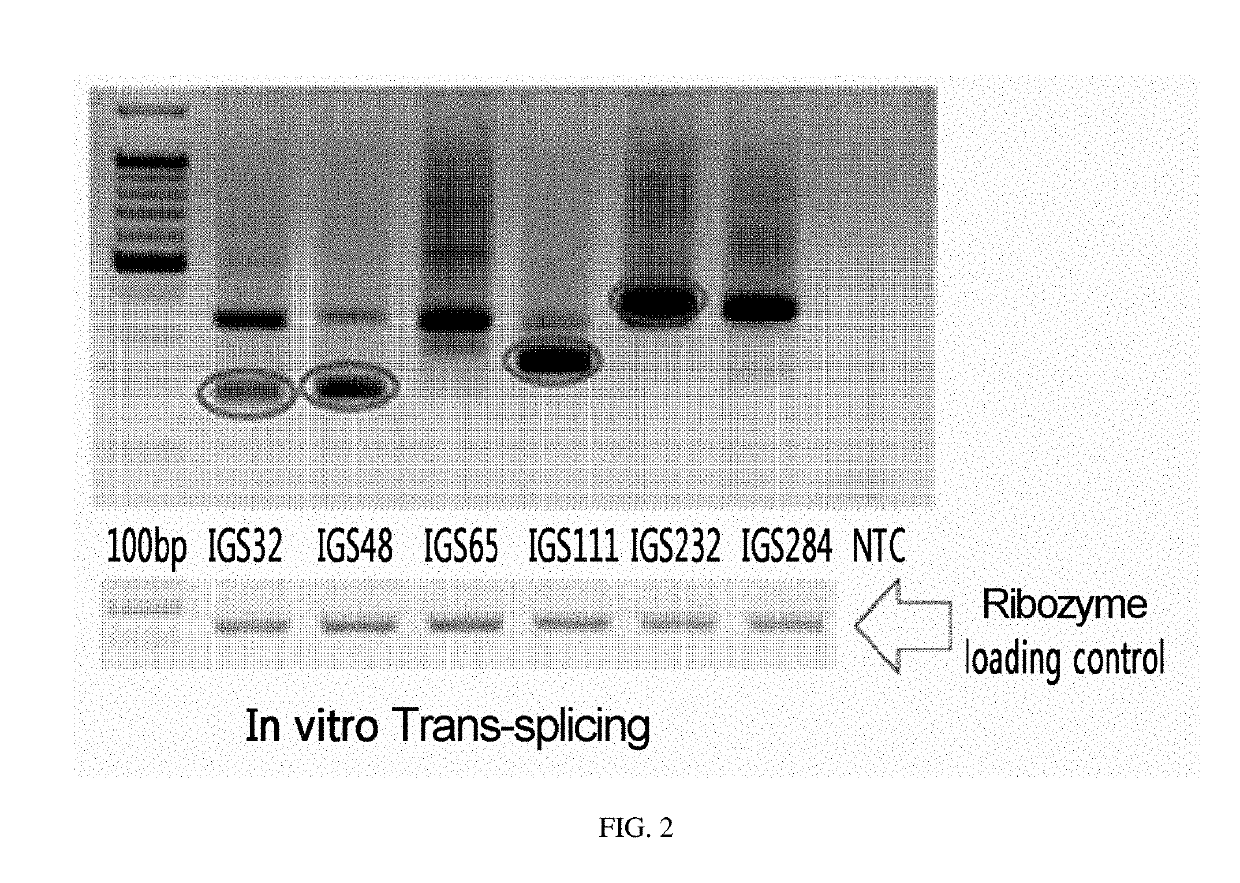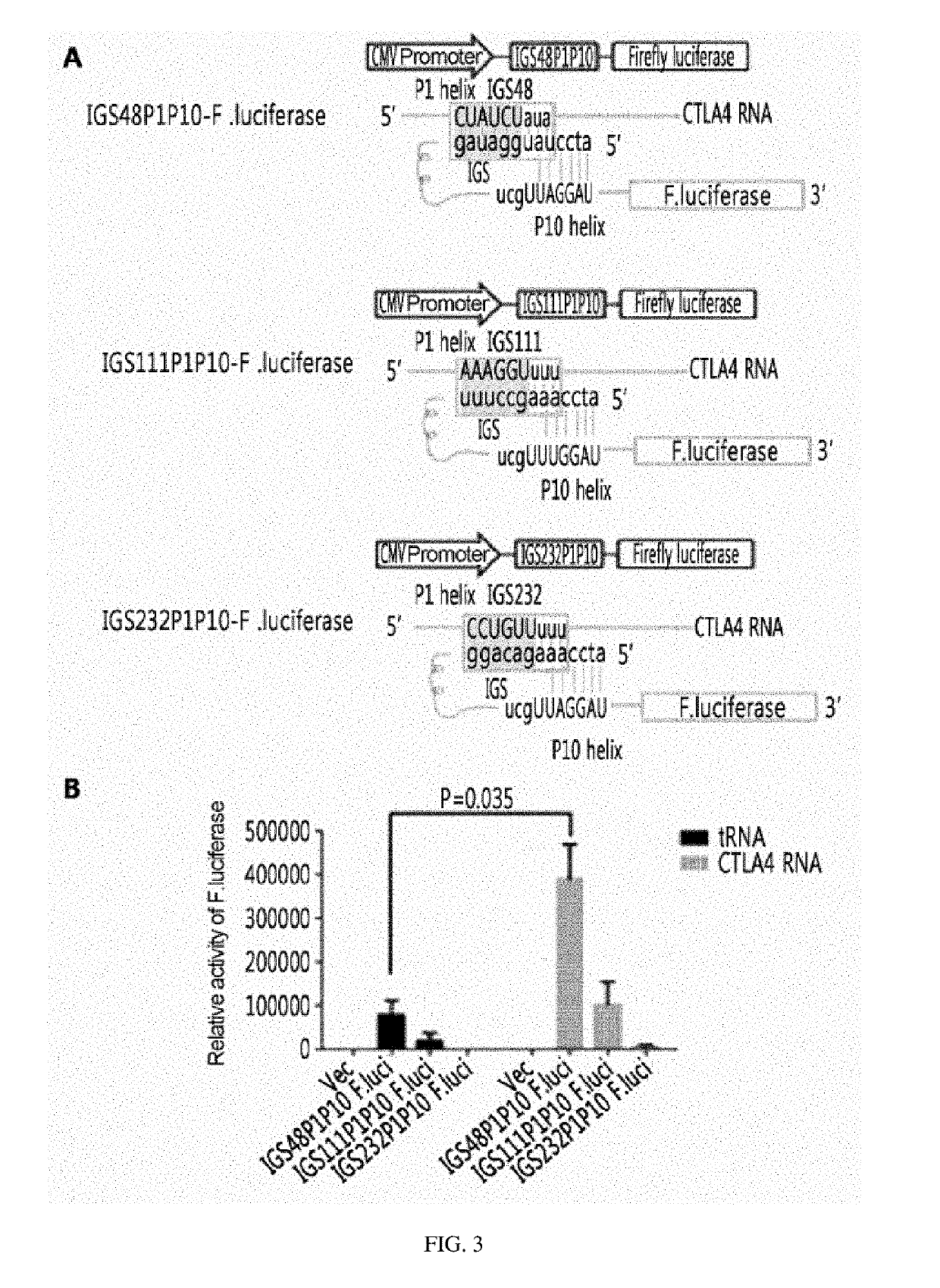Ctla-4-targeting trans-splicing ribozyme for delivery of chimeric antigen receptor, and use thereof
a chimeric antigen receptor and transsplicing technology, applied in the field of recombinant vectors, can solve the problems of human death, cancer is an incurable disease that has not yet been conquered, and normal cells are also adversely affected, so as to improve the effect of anti-cancer effect, reduce toxicity, and improve the effect of both therapeutic efficacy and safety
- Summary
- Abstract
- Description
- Claims
- Application Information
AI Technical Summary
Benefits of technology
Problems solved by technology
Method used
Image
Examples
example 1
[0101]1-1. In Vitro Mapping of CTLA-4 RNA
[0102]In order to construct a ribozyme capable of effectively acting on CTLA-4 RNA, in vitro mapping was initially performed to seek ribozyme internal guide sequences (Ribozyme IGSs) capable of recognizing, specifically and effectively, a specific sequence of CTLA-4 RNA.
[0103]Specifically, for trans-splicing reaction, ribozyme library RNA, in which IGSs are randomized, and CTLA-4 RNA were reacted at 100 nM: 10 nM in an absolute amount, respectively. Prior to the reaction, the substrate CTLA-4 RNA (2× reaction buffer, substrate RNA, 0.2 mM dGTP, DEPC-H2O) was previously preheated at 37° C. for 5 minutes, and ribozyme RNA (2× reaction buffer (Ribozyme RNA, DEPC-H2O) was allowed to stand at 50° C. for 5 minutes and then to stand at 37° C. for 2 minutes to induce correct tertiary structure formation. The two reactants (CTLA-4 RNA solution and ribozyme RNA solution) were mixed well and reacted at 37° C. for 3 hours.
[0104]10 μl of th...
example 2
Comparison of Ribozymes with Different Recognition Sites
[0115]Experiments were performed to confirm the intracellular function and efficiency of each ribozyme which recognizes the specific sites of CTLA-4 identified by mapping.
[0116]HEK-293 cells were seeded in a 35 mm dish at 3×105 cells. After 24 hours, two tubes were prepared, one tube in which 1 μg of DNA was added to 500 μl of serum-free media, and the other tube to which 500 μl of serum-free medium and 3 μl of DMRIE-C (Invitrogen) were added. The two tubes were mixed well to allow DNA to form complexes in the form of a liposome which is capable of entering cells well, followed by incubation at room temperature for 30 minutes. For RNA, 1000 μl of serum-free medium and 3 μl of DMRIE-C(Invitrogen) were mixed and 5 μg of RNA was rapidly mixed immediately before transformation. After incubation for 4 h in a 5% CO2 incubator, the medium was replaced with MEM media (Hyclone) including 10% FBS and 1% Penicillin / Streptomycin.
[0117]To 1...
example 3
ion and Production of Ribozyme-Expressing Retroviral Vector
[0123]3-1. Construction of Ribozyme-Expressing Retroviral Vector
[0124]A ribozyme was cloned into a retroviral vector (pMT-CAR) including a Tag72 antigen-recognizing chimeric antigen receptor (CAR, SEQ ID NO: 4) from ViroMed. In particular, as confirmed in Example 2 above, a retroviral vector was constructed by using IGS48 ribozyme, which has the highest efficiency of ribozyme and permits leaky expression to occur well, to confirm the activity of the ribozyme.
[0125]Specifically, PCR was performed using primer (IGS48 BamHI F, IGS48Rib BamHI R) from the PcDNA3.1(+)-IGS48 ribozyme-F.luciferase plasmid, and then DNA was eluted to obtain an insert. pMT-CAR vector was prepared by digestion with BamHI to allow CAR to be expressed with 3′ exon of IGS48 ribozyme. The vector and insert were subjected to ligation reaction at 16° C. Clones were screened with BamHI and sequenced to obtain three clones of #5, #11, and #16 (pMT-Rib-CAR).
[01...
PUM
| Property | Measurement | Unit |
|---|---|---|
| Nucleic acid sequence | aaaaa | aaaaa |
Abstract
Description
Claims
Application Information
 Login to View More
Login to View More - R&D
- Intellectual Property
- Life Sciences
- Materials
- Tech Scout
- Unparalleled Data Quality
- Higher Quality Content
- 60% Fewer Hallucinations
Browse by: Latest US Patents, China's latest patents, Technical Efficacy Thesaurus, Application Domain, Technology Topic, Popular Technical Reports.
© 2025 PatSnap. All rights reserved.Legal|Privacy policy|Modern Slavery Act Transparency Statement|Sitemap|About US| Contact US: help@patsnap.com



